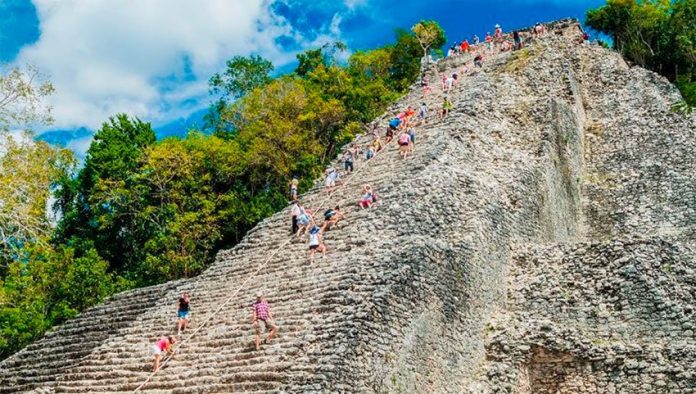A change in the route of the Maya Train provides an opportunity to relieve the pressure of urbanization and population growth faced by Tulum, according to a state government official.
The National Tourism Promotion Fund (Fonatur) announced this week that the train will no longer run directly between Valladolid, Yucatán, and Cancún, but instead from the former city to Tulum via Cobá, Quintana Roo.
At Tulum, travelers will be able to take another line north to Cancún, or south into Campeche and Chiapas.
Eduardo Ortiz Jasso, director of the Quintana Roo Strategic Projects Agency, said the route modification will attract real estate development and encourage population growth in the center of the state and alleviate pressure on Tulum as a result.
The once sleepy Caribbean coast town has seen rampant construction of hotels, restaurants and other tourism-oriented infrastructure in recent years although some projects have been halted or blocked due to environmental concerns.
As a result of Fonatur’s announcement, Ortiz said the design of a new town in the area where the Cobá train station will be built is already under analysis.
The official said the development will seek to benefit people already living in communities in the area, where there has been little previous investment.
“The section that was eliminated, Valladolid-Cancún, didn’t benefit any town. In contrast, the new line will mean urban and real estate development in an area that currently lacks development opportunities . . .” Ortiz said.
He also said that the addition of the stretch of railway linking the archaeological sites of Cobá and Tulum will make travel on the Maya Train more attractive to visitors and allow the creation of new tourism products.
The Quintana Roo government is reviewing land it owns along the proposed route with a view to ceding it for the development of the rail project.
Ortiz said that by July at the latest the government will commission three studies of the land between Valladolid and Tulum: an analysis to determine where rights of way need to be obtained, a topographic survey and an aerial photography study.
It is estimated that the route change will knock as much as 7.5 billion pesos (US $394.8 million) off the cost of the Maya train project, which was originally expected to be built for between 120 and 150 billion pesos (US $6.3 billion to $7.9 billion).
Some experts have warned that construction of the railway, which is scheduled to begin operations in 2023, poses environmental risks to underground water networks on the Yucatán peninsula and the long-term survival of the jaguar.
Source: El Economista (sp)
